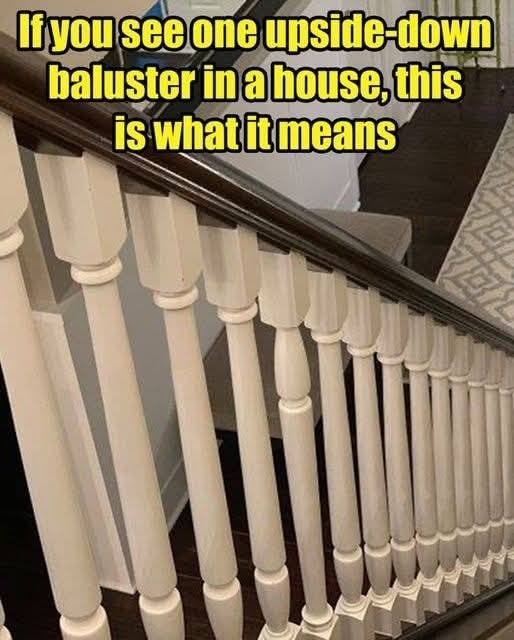Outside of its mystical interpretation, the inverted baluster also embodies ideas of duality and harmony. A staircase naturally represents transition — the movement between above and below. Introducing a single element of imbalance, such as the reversed spindle, subtly reinforces this concept of balance within contrast. The deliberate imperfection becomes a visual reminder of equilibrium — between the physical and spiritual, the perfect and the flawed.
A Tradition Found in Historic Homes
This unique design choice is far from rare in older houses. In 2020, HGTV and DIY Network host Scott McGillivray drew attention to the phenomenon when he posted a photo on Facebook showing a staircase with one upside-down baluster near the middle of the railing.
“One of these things is not like the other,” he captioned — and the internet took notice.
Thousands of comments poured in. Some suggested it was intentional, rooted in tradition:
“It’s common in old homes,” one commenter wrote. “The carpenter believed only God is perfect, so one spindle was flipped to show humility.”
Another echoed the sentiment:
“Builders used to think making something flawless meant competing with God. Leaving a small imperfection showed respect and submission.”
Others were more skeptical — or simply amused:
“Maybe they ran out and hoped no one would notice,” joked one person.
“That would drive me crazy!” another admitted.
A Glimpse Into the Past
What might appear today as a design mistake is, in fact, a fascinating link to the past. These small architectural anomalies tell stories of faith, craftsmanship, and culture — reminders that buildings are more than wood and stone; they’re repositories of human thought and belief.
So next time you climb a staircase, take a closer look at the balusters. You may just be walking past a small piece of living history — one that connects the artistry of the past with the spaces we call home today.
ADVERTISEMENT

